My favorite thing to do in Venice has nothing to do with a museum or a church or a postcard-perfect landmark; it doesn’t involve Carnivale masks or colored glass, gondolas or lace. No, it’s the hour between 7:30 and 8:30 a.m., when the city is just waking up. I like to take a walk in the morning, sometimes to run an errand but more often to nowhere in particular, just a stroll through these twisted, quiet streets.
Venice is slow to wake, with a yawn and a cautious stretch as it sheds the night’s tranquility and prepares for the chaos to come. The day-trippers haven’t yet arrived, so the streets are hushed, populated primarily with Venetians. Most of the shops and cafés are closed, but they are showing signs of life: workers washing the windows; men delivering packages on rolling carts; shop owners standing in doorways to smoke a cigarette and have a chat with passersby. The bars that are already open are crowded with locals, having a cappuccino and conversation. The garbagemen are cleaning up the mess the pigeons created the night before, and the commuters are crossing barren campos on their way to work.
It is in this hour that Venice truly is La Serenissima, the most serene. The water whispers, and the sun hangs low, the city’s streets cast in idling shadows.
As the hour closes, though, there’s a shift as if the air has thickened. I walk along the water in the Parco delle Rimembranze and eye a cruise ship as it slowly rolls in. In the near distance, I can see tour groups lined up in front of the Zaccaria Ferry Terminal, armed with cameras and selfie sticks as they prepare to descend on the Bridge of Sighs.
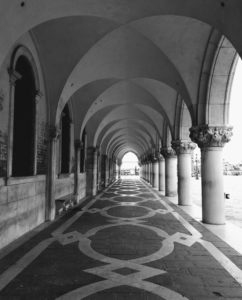
It’s easy, I think, for many tourists to forget that Venice is a real city. It’s not just a pretty place where they can eat gelato and take a photo from a bridge. It’s not a theme park with attractions designed to entertain visitors.
Let’s say that again: Venice is not an amusement park. It’s a place where actual people live.
Venetians do the same things that anyone does anywhere: they have friends and family that they want to see; they go out to dinner, and they drink coffee in cafés; they go to work and make time to play; they go to the movies, the hardware store, la farmacia, the doctor’s, the market; they are born, they live, and they eventually die.
But when the hardware store and la farmacia and the corner market are taken over by a shop selling made-in-China souvenirs, it can make living in a place difficult, even unbearable. So unbearable that many Venetians are leaving. It is estimated that the population of Venetians living in Venice has dropped from around 175,000 post World War II to around 55,000 today. But the city isn’t turning into a ghost town. On the contrary, it has been taken over by tourism.
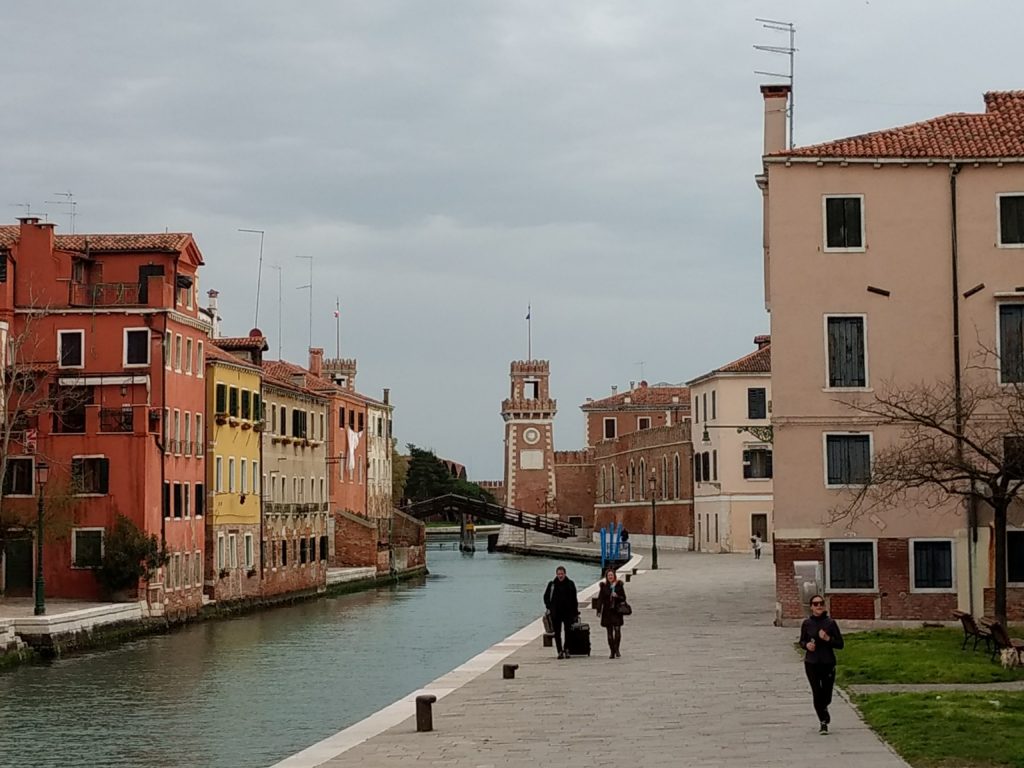
An account I follow on Instagram recently posted a photo of a young Venetian woman who had come to Piazza San Marco to celebrate graduating from college. In the photo, the woman smiles at the camera as hordes of tourists buzz around her. The description points out that historically the Piazza was the center of Venice for locals, a place where important religious and civil ceremonies occurred, and a place where everyday living happened: strolling, sitting in cafés, meeting with friends.
Today, though, the Piazza’s population is made up almost entirely of pigeons, tourists, and souvenir stands selling cheap crap to tourists. When tourism tries to strip away a treasured landmark from the locals, there’s a problem.
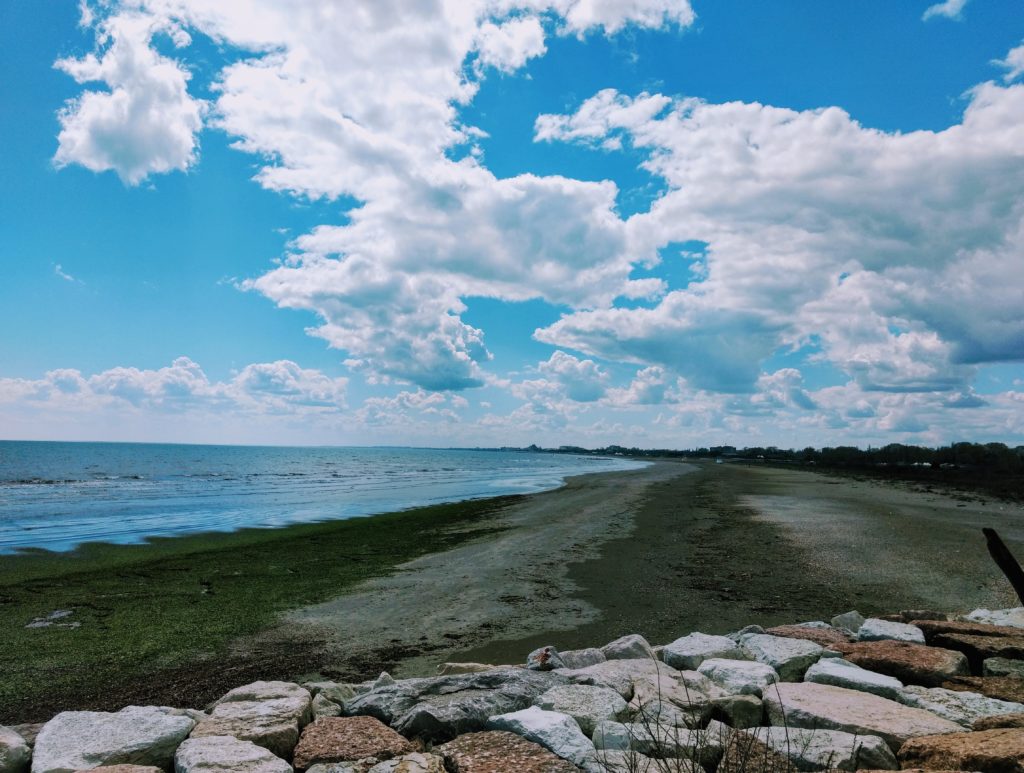
The problem, in my mind, isn’t simply tourism but a specific type of tourism. Venice has a long history of attracting writers, artists, and intellectuals. It’s a beautiful and vibrant city that people have flocked to for centuries. It’s a place that entices dreamers. And ultimately it’s a place that, in many ways, depends upon tourism for its survival.
But it seems that in the past few decades there has been a shift not just in the numbers of people who come to Venice (the most recent numbers I’ve seen estimate that there are around 20 million visitors each year) but in how these visitors experience Venice. The length of stay has decreased — from a few days to a few hours. Yes, Venice is small in size, but turning it into a day trip means that the majority of visitors don’t remotely experience what the city has to offer, and it means that the tourists aren’t giving back to the city’s economy and people.
Unfortunately, the rise in tourism has led to an influx of non-Venetian run businesses that sell inexpensive, foreign-made imitations of Venetian glassware, lace, masks; these businesses, of course, run out local businesses and make it challenging for the locals to live and nearly impossible for the responsible tourist to know how to support quality, local shops and restaurants. There are more than enough tourists, but the majority aren’t necessarily helping Venetians’ lives.
Because Venice is so geographically small, the daytime population density is out of control; I’ve been in smaller crowds New Year’s Eve along the Champs-Elysées in Paris. The numbers of people trying to shuffle along between the Rialto bridge and Saint Mark’s square is sheer chaos.
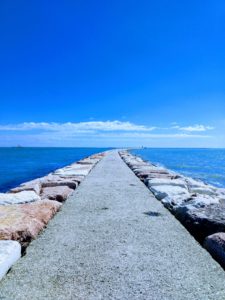
I’ve spent a lot of time these past few months thinking about place, and, more specifically, what makes a place its authentic self? A place, to me, isn’t just the geography of a specific location but instead the intersection between its geography, people, and culture. And it’s clear to me that places, like people, are not static. Instead, they are constantly evolving into something else.
So where does that leave Venice? What is the “real Venice”? Has the “real Venice” today evolved into nothing more than a parking lot packed with day-trippers; thousands of tour groups being led through the crowded streets by a guide carrying a broken umbrella; high end designer shops (competing with men pawning designer knockoffs in the streets); vendor after vendor selling knock-off Venetian glassware, lace, and masks?
I don’t think so. The Venetians are fighting, fighting to maintain their identity and fighting to protect their home. There are protests fighting against the cruise ships entering the lagoon. There are groups fighting to protect local businesses and local traditions. The solution, of course, is complex and not for me, as a visitor, to decide.
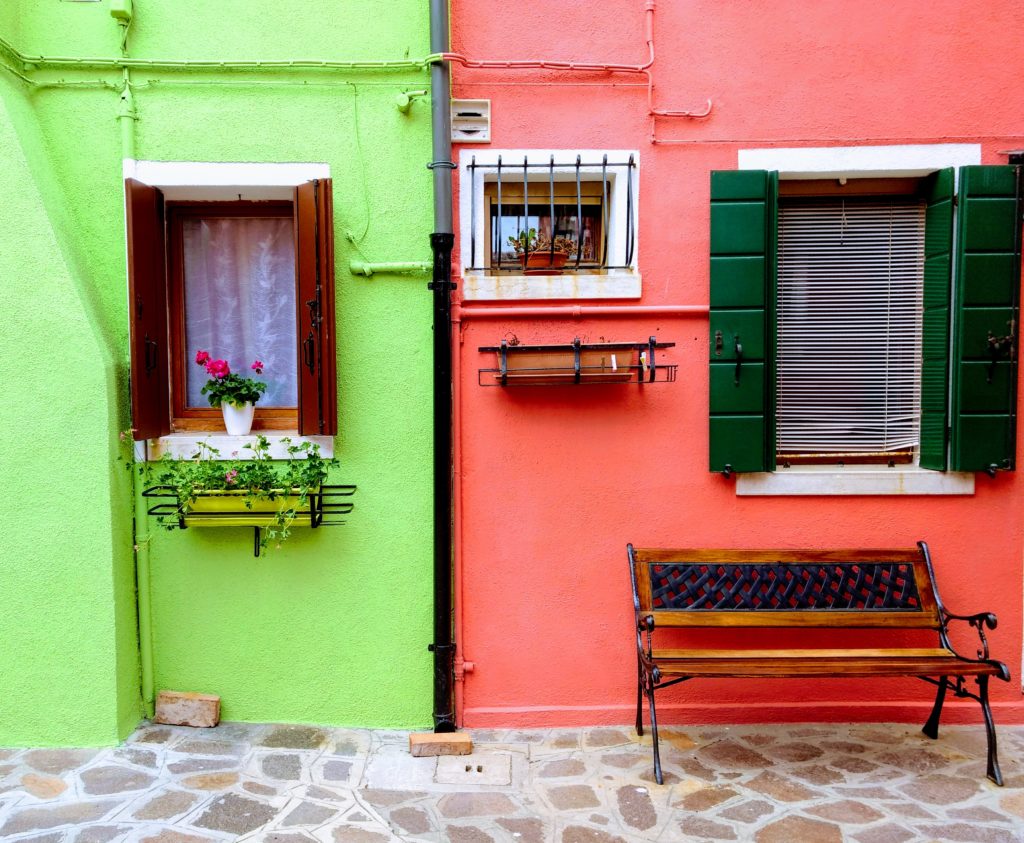
But I do think that visitors can and should take action to be more responsible tourists when they do come to Venice. We can all take some time to get to know the real Venice and to remember that our experience as tourists in Venice shouldn’t come at the expense of the well-being of Venetians.
We might not all be able to learn to speak Venetian, but we can all learn a few Italian words and phrases. Pick up a book on the history of Venice or a novel or two set in Venice; it will help bring the city alive. Get to know Venice’s cuisine. If you want pizza, go to Naples; if you want carbonara go to Rome; if you want Pesto alla Genovese go to Genoa. In Venice, you can eat cicchetti (washed down with some Prosecco).
Venice should not, in general, be a day trip. Aim to stay for a few days (or even better, a few weeks) and stay in Venice, not Mestre. Yes, it will cost more money, but you will have a better experience and you will be putting money into Venice. It can be difficult to make sure you are staying at a place that is not taking away a potential home from a Venetian, but with some research you can find something.
Everyone goes to Saint Mark’s and the Rialto. Get off this path (you’ll have a lot more elbow room to roam). Explore Cannaregio and Castello. Take the vaporetto to Burano or Murano or — even better — to Torcello, Lido, or Giudeca.
Avoid stopping in the middle of a crowded bridge or alley to take a photo. I realize you’ve just seen something pretty, but I guarantee that you’ll see something pretty in thirty seconds. This is Venice. Pretty is everywhere. Bridges and alleys are passageways for people to get around an already crowded city. When you stop, you are creating an even bigger traffic jam.
Avoid purchasing cheap “Venetian” souvenirs that aren’t made in Venice. Instead, seek out local businesses that support Venetians and sell Venetian-produced products. Yes, you may spend a few more Euros, but in supporting local businesses, you are supporting Venice. (And your friends and family back home don’t really need/want a poorly-made mask/bowl/shirt that they’ll probably lose or throw away eventually; if you want to buy gifts, buy something real.)
Venezia Autentica is a great resource to help you get started.
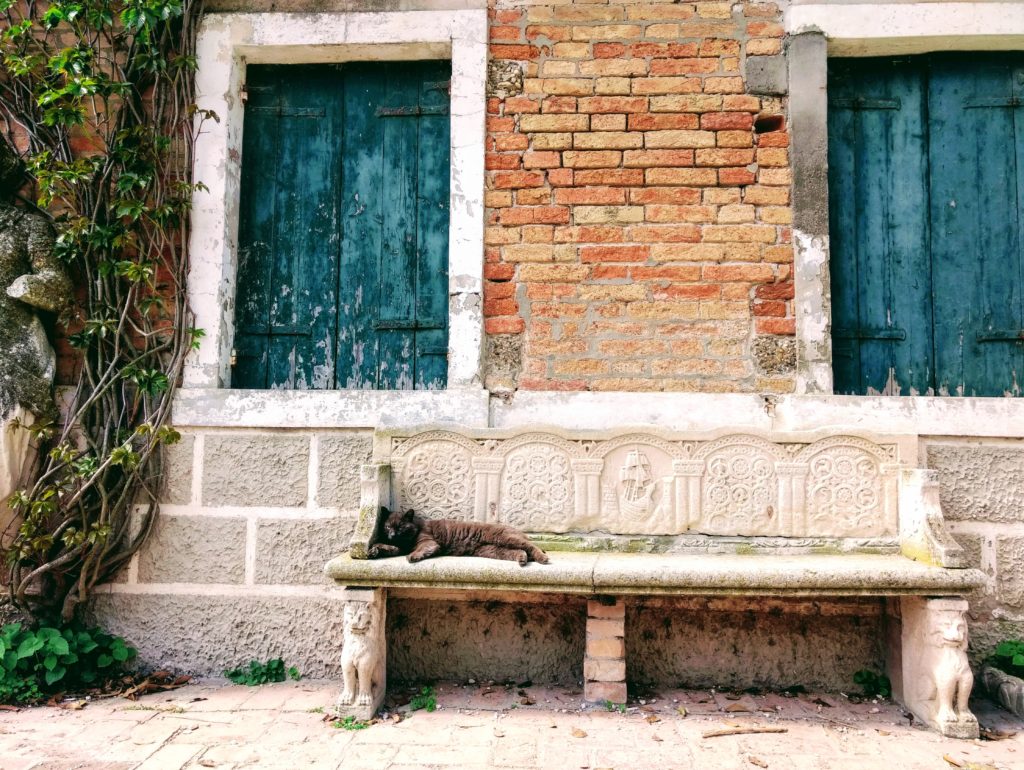
The reality is that the movement to protect Venice must come from within, but we visitors are responsible to support this movement, even if that means spending a bit more money or walking a few steps further to seek out a local business.
The other night, some friends, who are currently living in Venice, and I went to Osteria Ruga di Jaffa, a bacaro listed at Venezia Autentica. The man who owns it (who I must admit I have a little crush on, so I might be a wee bit biased) said that the man who operates Venezia Autentica is only 9 days older than he is, that they’ve been friends since before they were born. He didn’t even know that his place was listed at the site until a customer told him about it. Which was just fine. He told us that his friend is brilliant and that he always knew he’d do something like this, something special, something important in the place that means the most to him.
As I sipped my Prosecco I realized, this is how the real Venice goes on.
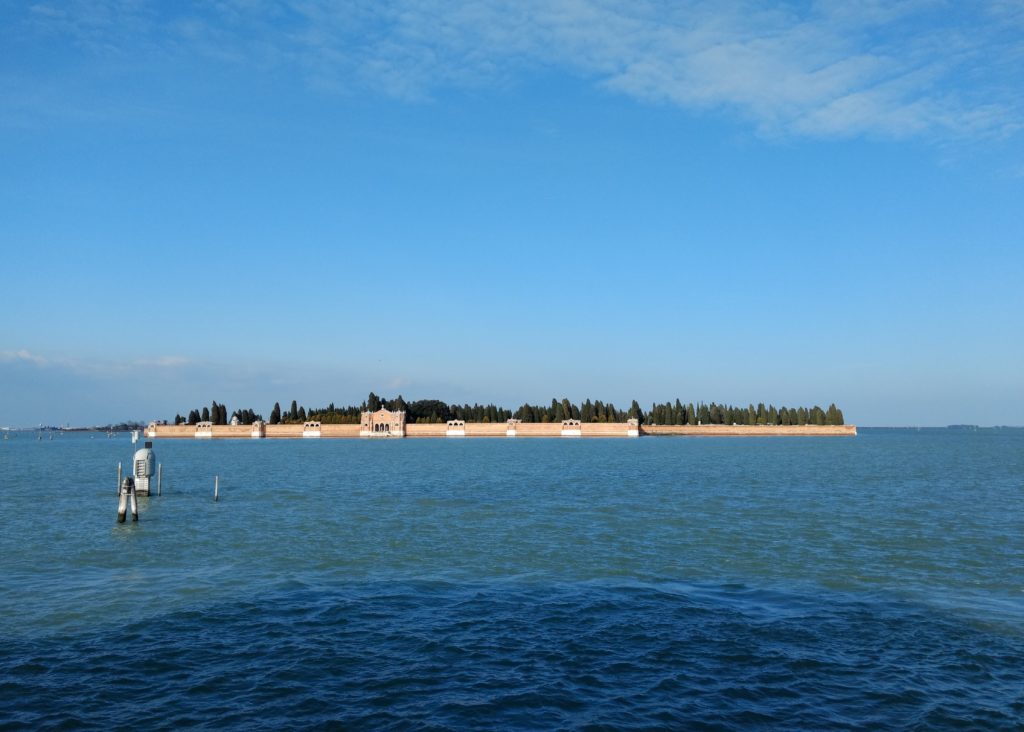
In the end, I think a place’s authenticity, its realness, is something intangible. Something magical. It’s a spirit, an energy that comes from within its people. As long as the people of Venice keep ahold of that energy, the real Venezia will survive.
I am reminded of the young woman whose photo I saw on Instagram. In it, she is holding a bouquet of flowers and wearing a wreath on her head. Though she is surrounded by tourists, she is smiling. She is proud of her accomplishments. And that is why she is there. Because in the end, Venice belongs to her, Piazza San Marco belongs to her.
In the end, this is what is real. In the end, she is Venezia.
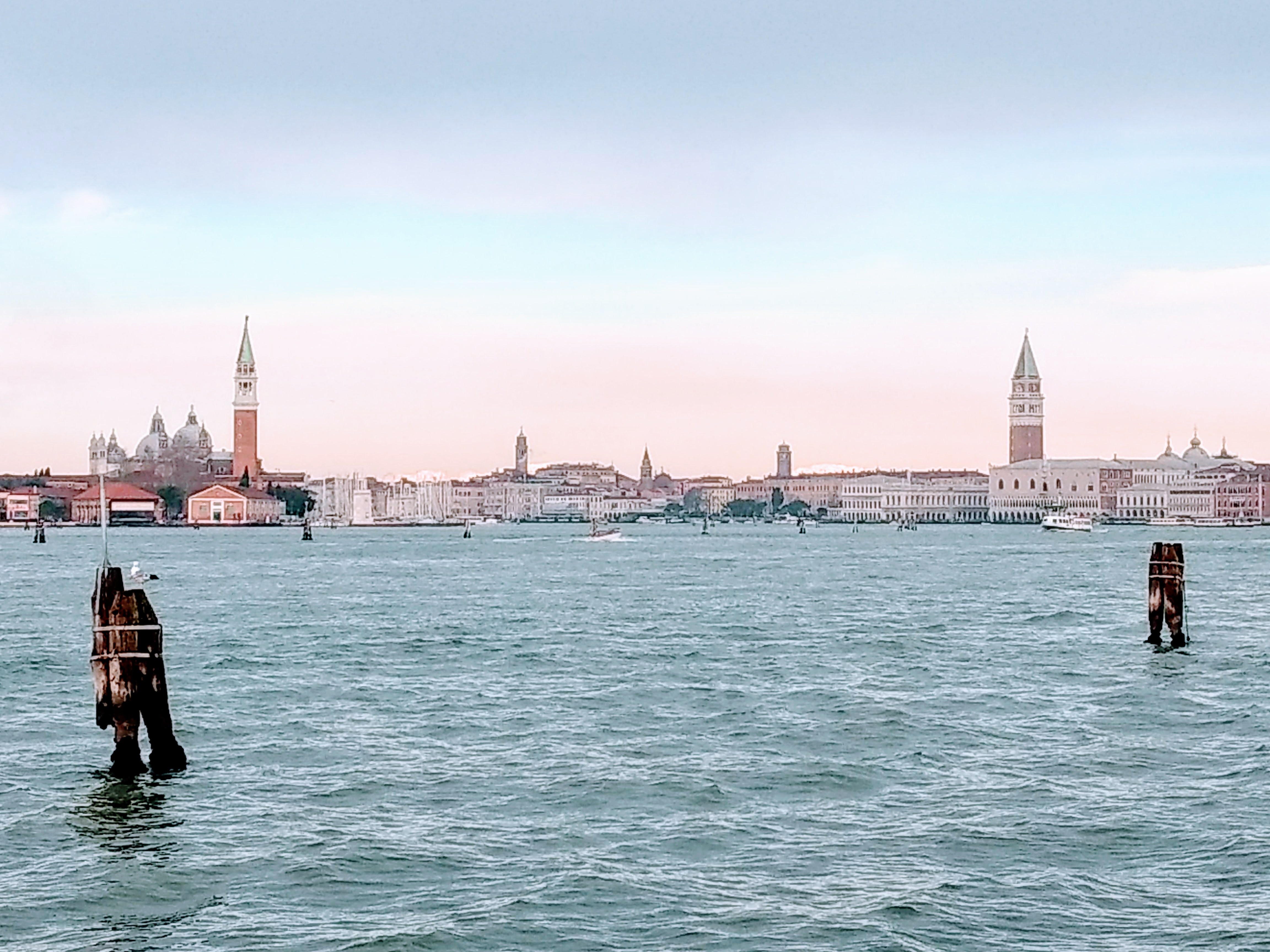



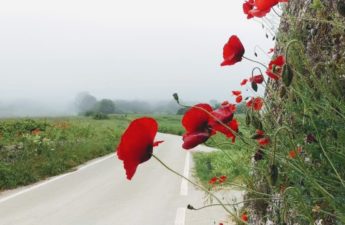
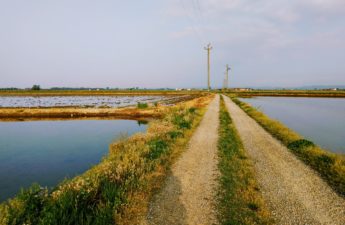
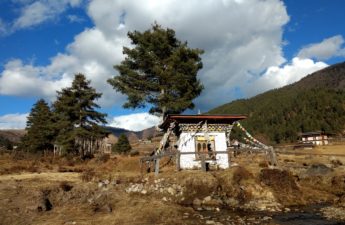
Your piece is magnificent; could you sent it to a magazine? I think others should read it . One of my favorite images is of your place definition: “a place is the intersection between its geography, people and culture.”
Thanks, Mumsie! I like that line, too. I think it captures a lot of what I’ve been thinking about these past few months 🙂
Beautiful photos, lovely writing, and a good message, TJ. Miss you back home though. Hard to imagine you’ll want to come back…
Come back? Come back? What a horrible thought! (Though I do miss you, of course — but it’d be better for everyone to fly to wherever I am than for me to return!) xo
Oooh, I love this! You really captured it so well.
This weekend the city supposedly tested out a plan to divert crowds from the main thoroughfares to other, less-traveled routes. I say “supposedly” because we read about the measures, but we never saw them in action, and no one we talked to in our usual places saw any difference in tourist foot traffic either way. But everyone had mixed feelings about the idea — after all, there ARE parts of the city that don’t feel like a theme park, and the risk of sending the day-trippers that way is that those neighborhoods will start to change too.
We see lots of hope, though. Friday was graduation, for some doctoral students, at least, from the university, and so our neighborhood was clogged with drunken revelry — but of the local kind. (There’s apparently a tradition of the dottore having to dress up in a funny outfit chosen by friends and having to declaim his or her life story — written by friends, I believe — while chugging alcohol. Friends and family and passersby sing at them, too.) We didn’t mind that all the noise made it hard to get to sleep.
We will continue to support the local cicchetti businesses in your honor!
Oh, I’m glad you liked it. I struggled a bit with it and don’t know that it really captures what I wanted to say, but I wanted to post it before it slipped from my mind.
I did see about that at Venezia Autentica — and was wondering how it went. It seemed like an interesting experiment, though, as you said, I could see mixed feelings about it. But I think it’s good to see Venice trying different things to preserve their city.
Local cicchetti. Drooling. Get some extra anchovies for me 🙂
Loved this! As someone with a terrible sense of direction, “monkey with glasses” makes way more sense than “head northwest” or whatever.
And I think I was one of those one-day tourists back when I was a teenager in Venice 🙁
The problem with the monkey wearing glasses is that they kept changing the window display!
I think we all start off being tourists like that — but then realize we need time to marianate in a place! xo